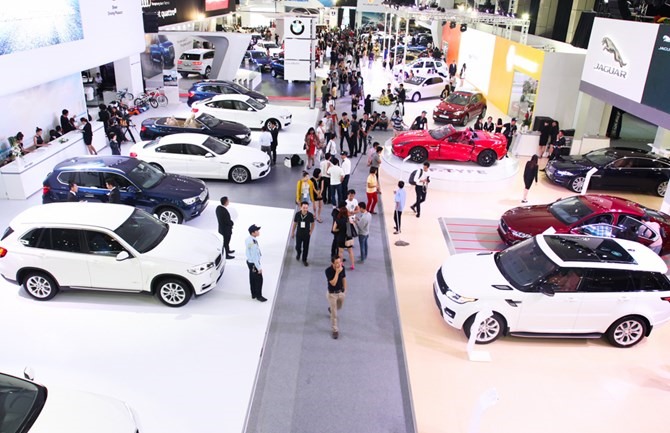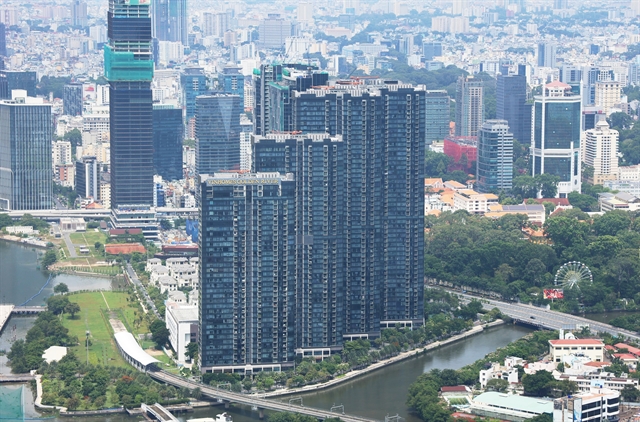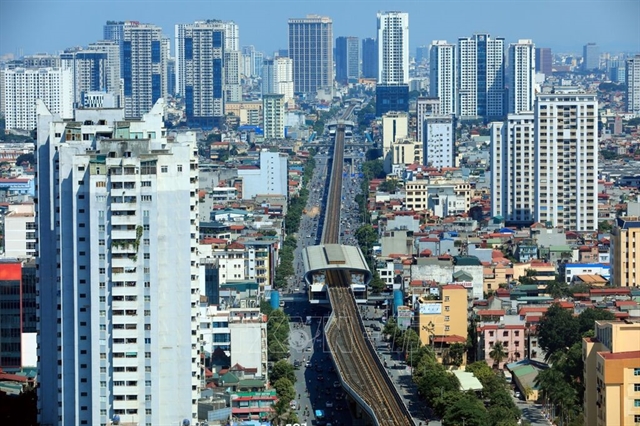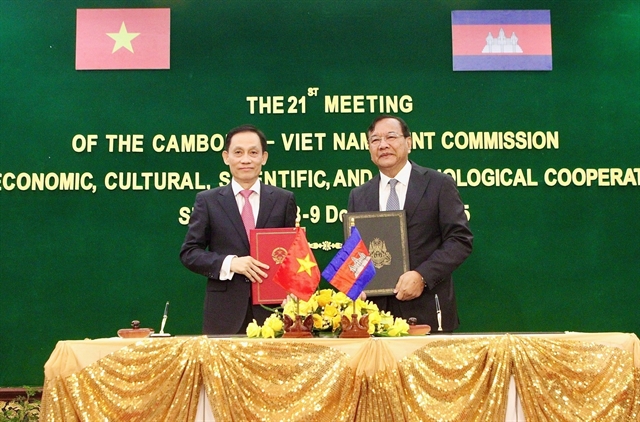.jpg) bizhub
bizhub

Some 8,000 complete built-up units of cars worth US$180 million were imported to Việt Nam in August, marking a slight increase of 1,000 units in volume and $13 million in value compared with the previous month.
 |
| It’s predicted that the turnover of CBU import cars at the end of the year will continue to fall, as new policies will lead to changes. — Photo vietnamnet.vn |
HÀ NỘI — Some 8,000 complete built-up units of cars worth US$180 million were imported to Việt Nam in August, marking a slight increase of 1,000 units in volume and $13 million in value compared with the previous month.
These figures were estimated by the General Statistics Office of Việt Nam (GSO).
The increase was marginal, however it pointed to positive signs for the auto import market.
Insiders said domestic auto consumption is currently unstable because many consumers are still waiting for prices of cars to be lowered until early 2018 when import tariff in the ASEAN bloc will become zero per cent. Notably, local automakers and distributors have been trying to accelerate consumption through discounts and promotional programmes.
According to the GSO, Việt Nam imported some 66,000 units in the first eight months of the year with total import turnover of nearly $1.39 billion, down 4.4 per cent in volume and 14.4 per cent in value year-on-year.
Based of the current situation, according to some forecasts, the turnover of CBU import cars at the end of the year will continue to fall, as new policies will lead to changes. The dramatic change either up or down will depend on whether the auto industry has a new policy in place and the market has clearly defined the "picture" of car prices in 2018.
Feedback for tax cut draft
According to the Ministry of Finance’s draft document in which the ministry presents two methods for implementing tax cuts on parts that are used to assemble cars with nine seats or less and trucks with capacity of five tonnes and below in Việt Nam, the Việt Nam Chamber of Commerce and Industry (VCCI) and the Vietnam Automobile Manufacturers’ Association (VAMA) sent their ideas on the document before it is submitted to the Prime Minister for approval in the future. The document would be in effect from January 1, 2018 to December 31, 2022.
According to the ministry’s first proposed method, import tariffs on 163 auto parts will be cut to zero per cent. The average tariff of the set of auto components will be reduced from 14-16 per cent to seven per cent for nine-seater cars and to one per cent for trucks. Under the second method, the ministry wants to decrease import tariffs on 19 parts, including engine, gear-box, automatic transmission system and fuel injection pump, which are not produced in Việt Nam, from the current 3-50 per cent to zero per cent. Under this plan, the average import tax on the set of auto components will decrease from 14-16 per cent to 9-11 per cent for cars and to 7.9 per cent for trucks.
VCCI said it chose the first method because it will help automakers cut costs more significantly than the second method. It is expected to encourage the import of parts to boost auto assembling of cars with nine seats or less and trucks with capacity of five tonnes and below.
Meanwhile, VAMA proposed that the ministry reduce import tax on all auto parts that are imported by automakers to zero per cent when import tariff in the ASEAN bloc becomes zero per cent in 2018. This would also be applied for all the material and semi-products imported by part suppliers. No condition will be given to automakers or part suppliers.
According to the ministry’s draft, to benefit from the tax cuts, automakers of cars with nine seats or less and trucks with capacity of five tonnes and below must reach an annual growth rate of 16-18 per cent and 40 per cent of production value must be accrued locally, in line with the national automobile industry development programme. Automakers that do not meet the targets will pay higher taxes on imported parts. They also must reach an annual growth rate of 16 per cent with minimum output of 34,000 units by 2018. Output must rise steadily each year to hit 61,000 units by 2022. As for trucks, the ministry requires the manufacturers to achieve an annual growth rate of 18 per cent with minimum output of 8,000 units in 2018, raised to 15,000 by 2020.
VAMA said the draft tax cuts only created equality of import taxes between locally-assembled cars and imported cars, and there was no preference for local auto manufacturing.
As for policies to support local manufacturing, VAMA proposed that the ministry issue policies supporting local automakers to enhance their competitiveness and raise costs for imported cars to maintain the domestic automobile industry and attract more investment into Việt Nam. — VNS




